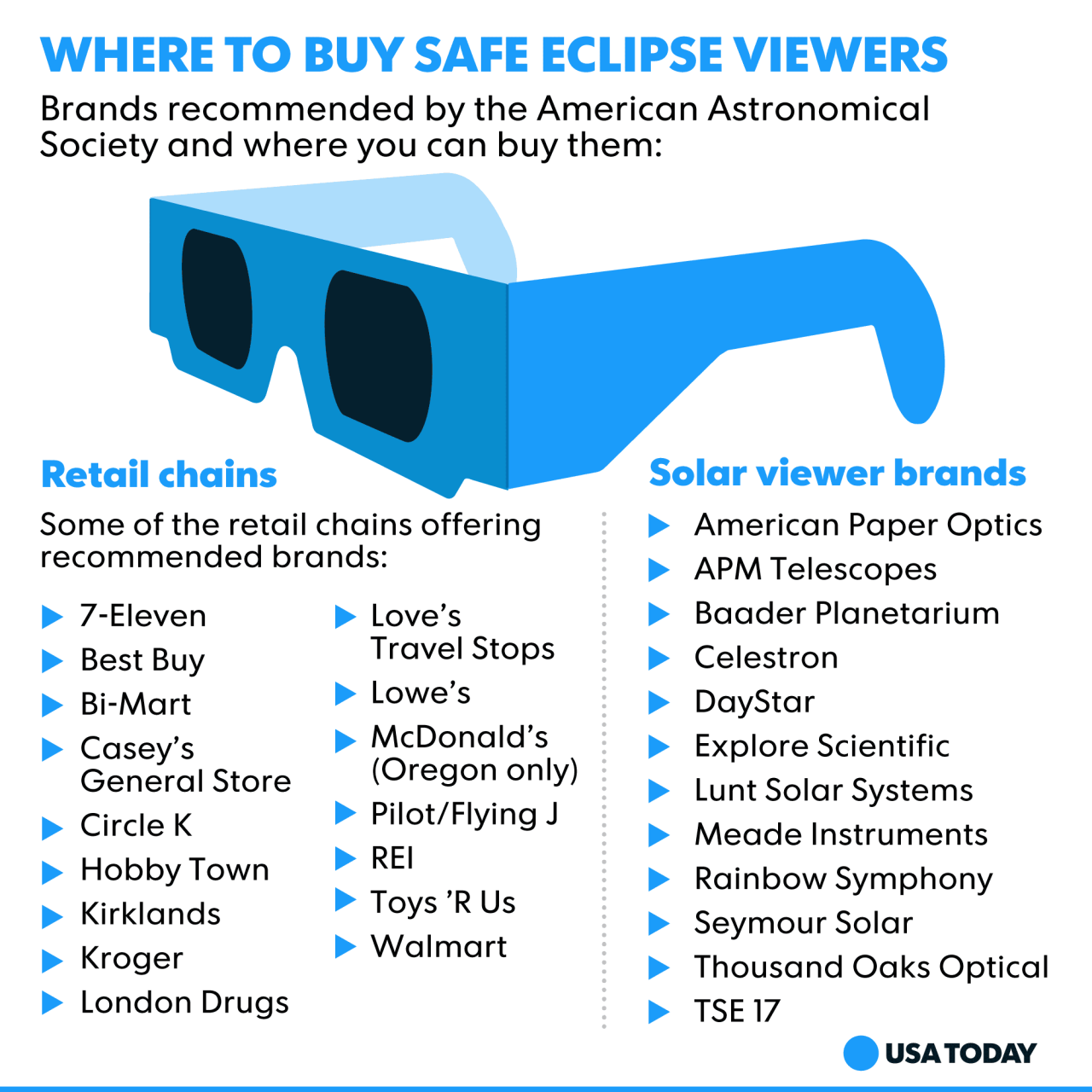DIY solar eclipse glasses might sound like a fun project, but the reality is that homemade filters are unreliable and potentially dangerous. Observing a solar eclipse without proper eye protection can lead to severe eye damage, including retinal burns. This is why it’s crucial to understand the risks associated with DIY eclipse glasses and prioritize your eye safety.
The dangers of viewing a solar eclipse without proper eye protection are well-documented. Throughout history, numerous cases of eye injuries have been reported, highlighting the importance of using certified solar eclipse glasses. These glasses are designed to filter out harmful radiation from the sun, protecting your eyes from potential damage.
Importance of Eye Safety
A solar eclipse is a breathtaking celestial event, but it’s crucial to remember that looking directly at the sun, even during an eclipse, can cause severe and permanent eye damage. The sun’s rays are incredibly powerful, and even during an eclipse, they can still harm your eyes.
Potential for Eye Damage
The sun emits harmful ultraviolet (UV) and infrared radiation, which can damage the retina, the light-sensitive tissue at the back of the eye. This damage can lead to a condition called solar retinopathy, which can cause blurry vision, blind spots, and even complete vision loss.
Looking directly at the sun, even for a short period, can cause permanent damage to your eyes.
History of Eye Injuries
Throughout history, there have been numerous instances of people suffering eye injuries from observing eclipses without proper protection. One notable example is the 1999 solar eclipse in Europe, where thousands of people reported eye damage after looking directly at the sun.
Understanding Solar Eclipse Viewing Safety Standards
To ensure safe viewing of a solar eclipse, it is crucial to understand the importance of using certified solar eclipse viewing glasses. These glasses adhere to specific safety standards designed to protect your eyes from harmful solar radiation.
ISO 12312-2 Standard for Solar Eclipse Viewing Glasses, Diy solar eclipse glasses
The International Organization for Standardization (ISO) has established the ISO 12312-2 standard, specifically for solar eclipse viewing glasses and filters. This standard sets out strict requirements for the optical density, materials, and construction of these products to ensure they meet the necessary safety criteria.
- The ISO 12312-2 standard mandates that solar eclipse viewing glasses must have an optical density of at least 5.0. This means they block out 99.999% of the visible light and nearly all harmful infrared and ultraviolet radiation.
- The glasses must be made of materials that are certified safe for solar viewing. Black polymer, aluminized mylar, and specially treated glass are commonly used materials that meet the standard.
- The construction of the glasses is equally important. The lenses must be securely attached to the frame to prevent them from falling out or becoming damaged. The frame should be comfortable to wear and provide a snug fit to ensure proper alignment of the lenses with the eyes.
Why Using Uncertified Materials Can Compromise Safety
Using materials that are not certified according to the ISO 12312-2 standard can severely compromise eye safety.
“Non-compliant materials may not offer adequate protection from the harmful radiation emitted by the sun, potentially leading to serious eye damage, including solar retinopathy.”
- For instance, using ordinary sunglasses, exposed film, or even CDs as solar filters is highly unsafe and can cause irreversible eye damage. These materials do not have the required optical density to block out the harmful radiation, and they can actually magnify the intensity of the sun’s rays, increasing the risk of injury.
- Even seemingly safe materials like welding glass may not meet the ISO standard and should not be used for solar eclipse viewing without proper certification.
Alternative Safe Viewing Methods

While looking directly at the sun during an eclipse is never safe, there are several safe and enjoyable ways to experience this celestial event. These methods allow you to witness the eclipse indirectly, protecting your eyes from harmful solar radiation.
Indirect Viewing Methods
There are various indirect methods for safely viewing a solar eclipse. These methods project the sun’s image onto a surface, allowing you to observe the eclipse without looking directly at the sun.
- Pinhole Projectors: This simple method involves creating a small hole in a piece of cardboard. When held facing the sun, the hole projects an image of the eclipse onto a surface behind it. The size of the hole can be adjusted to change the size and sharpness of the projected image.
- Solar Telescopes: Specialized telescopes designed for viewing the sun are equipped with filters that block harmful radiation. These telescopes can provide detailed views of the solar corona and other features of the eclipse. However, these telescopes are typically more expensive than other methods and require careful handling.
- Projection Techniques: You can project the sun’s image onto a screen using a mirror or binoculars. This method involves reflecting the sun’s light onto a surface, creating a projected image of the eclipse. It is crucial to ensure that the reflected light is not directed towards anyone’s eyes.
Advantages and Disadvantages of Indirect Viewing Methods
Each method has its own advantages and disadvantages:
| Method | Advantages | Disadvantages |
|---|---|---|
| Pinhole Projectors | Simple, inexpensive, and easy to make. | Provides a small and less detailed image. |
| Solar Telescopes | Provides detailed views of the eclipse and other solar features. | Expensive, requires careful handling, and may be difficult to find. |
| Projection Techniques | Can project a larger and brighter image. | Requires careful setup and attention to ensure no one is exposed to direct sunlight. |
Safety Considerations
Regardless of the method used, it is crucial to remember that looking directly at the sun, even during an eclipse, is extremely dangerous and can cause permanent eye damage. Always prioritize eye safety and use only approved and certified solar viewing glasses or other safe methods.
Resources for Purchasing Certified Solar Eclipse Glasses
It’s crucial to purchase solar eclipse glasses from reputable sources to ensure they meet the necessary safety standards. This section will provide information on where to find certified solar eclipse glasses and highlight the importance of choosing trusted sellers.
Reputable Online Retailers and Local Vendors
Purchasing solar eclipse glasses from reputable online retailers and local vendors is essential for ensuring safety. Here are some trusted sources:
- American Astronomical Society (AAS): The AAS website provides a list of reputable vendors selling certified solar eclipse glasses. You can find the list on their website: [Insert link to AAS website]
- NASA: NASA’s website also offers a list of recommended vendors for solar eclipse glasses. You can find the list on their website: [Insert link to NASA website]
- Amazon: While you can find solar eclipse glasses on Amazon, it’s crucial to carefully verify the seller’s credentials and ensure they are certified. Look for sellers with positive reviews and those explicitly stating that their glasses meet the ISO 12312-2 standard.
- Local Science Museums and Planetariums: Many science museums and planetariums sell certified solar eclipse glasses during eclipse events. This is a great option for supporting local institutions and ensuring the glasses are genuine.
Importance of Purchasing from Trusted Sources
It’s crucial to purchase solar eclipse glasses from trusted sources to ensure they meet the necessary safety standards. Here are some reasons why:
- Counterfeit Glasses: The market can be flooded with counterfeit glasses that don’t meet the ISO 12312-2 standard and can be dangerous. These glasses may not adequately filter harmful solar radiation, putting your eyes at risk of severe damage.
- Safety Standards: Certified solar eclipse glasses meet the ISO 12312-2 standard, which guarantees they filter out 99.999% of harmful solar radiation. Purchasing from reputable vendors ensures the glasses you buy meet these standards.
- Reputation and Reliability: Purchasing from trusted sources, such as the AAS or NASA, ensures that the glasses are genuine and meet the required safety standards. These organizations have established reputations for promoting scientific accuracy and safety.
Organizations Offering Reliable Information on Eclipse Safety
Several organizations offer reliable information on eclipse safety. These organizations provide valuable resources, including information on safe viewing practices, the importance of certified glasses, and where to purchase them.
- American Astronomical Society (AAS): The AAS is a leading organization in astronomy and provides extensive information on solar eclipses and safe viewing practices. You can find their website at: [Insert link to AAS website]
- NASA: NASA is another valuable resource for eclipse information and safety guidelines. Their website offers comprehensive information on solar eclipses, including safe viewing methods and the importance of using certified glasses. You can find their website at: [Insert link to NASA website]
- National Optical Astronomy Observatory (NOAO): NOAO is a research institution dedicated to advancing astronomical research. They offer resources on eclipse safety, including information on certified glasses and safe viewing techniques. You can find their website at: [Insert link to NOAO website]
Importance of Education and Awareness: Diy Solar Eclipse Glasses
Public education plays a crucial role in ensuring safe eclipse viewing practices. Educating individuals about the dangers of looking directly at the sun, especially during an eclipse, is essential to prevent eye injuries.
Resources for Educators and Parents
Educating children about eclipse safety is vital, and there are many resources available to assist parents and educators in this endeavor.
- The American Astronomical Society (AAS) offers a wealth of information on eclipse safety, including educational materials for teachers and parents.
- NASA provides a comprehensive guide for educators and parents, covering various aspects of eclipse viewing, including safety precautions.
- The National Science Teachers Association (NSTA) offers resources for educators, including lesson plans and activities for teaching about eclipses.
These resources can help educators and parents effectively communicate the importance of safe eclipse viewing practices to children.
Closure

Remember, when it comes to solar eclipses, safety should always be your top priority. Avoid using homemade filters, and opt for certified eclipse glasses from reputable vendors. By taking the necessary precautions, you can enjoy this awe-inspiring celestial event without putting your eyesight at risk. So, before you look up at the sky, ensure you’re equipped with the right tools to protect your vision.